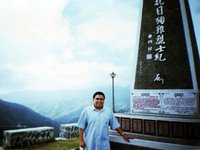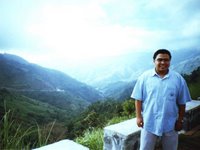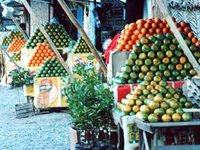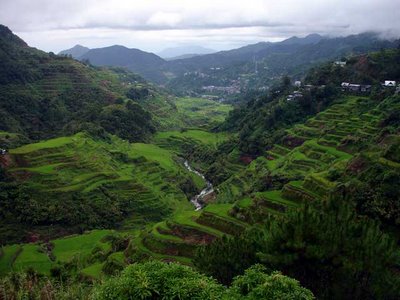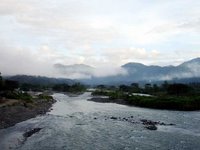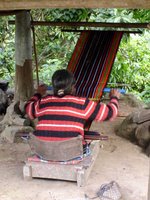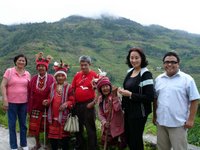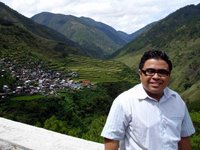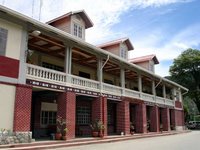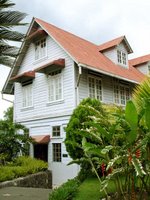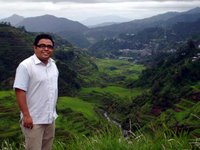 Imagine waking up to the cool Banaue morning with a view of the rice terraces and tree-covered mountains just outside your window. That's what I experienced at the Banaue Hotel for the past few days, with rooms, function rooms and a restaurant that provides panoramic views of the rice terraces. That's one cluster of terraces in the Banaue poblacion which is still free from eyesores and other unsightly structures.
Imagine waking up to the cool Banaue morning with a view of the rice terraces and tree-covered mountains just outside your window. That's what I experienced at the Banaue Hotel for the past few days, with rooms, function rooms and a restaurant that provides panoramic views of the rice terraces. That's one cluster of terraces in the Banaue poblacion which is still free from eyesores and other unsightly structures. It was our last day in Banaue and I'll definitely miss the cool mountain air and the great views. Before leaving for Manila, we listened to Ifugao Governor Teddy Baguilat talk about the challenges they have been facing in the preservation of the rice terraces and possible solutions to these problems. It's indeed very difficult to push for the preservation of these terraces when almost every young Ifugao dreams of making it big in the city, when G.I. sheets and hollow blocks become a status symbol. But there is definitely hope since the community realizes now that they are custodians of a legacy to the world.
It was our last day in Banaue and I'll definitely miss the cool mountain air and the great views. Before leaving for Manila, we listened to Ifugao Governor Teddy Baguilat talk about the challenges they have been facing in the preservation of the rice terraces and possible solutions to these problems. It's indeed very difficult to push for the preservation of these terraces when almost every young Ifugao dreams of making it big in the city, when G.I. sheets and hollow blocks become a status symbol. But there is definitely hope since the community realizes now that they are custodians of a legacy to the world.
 On our way back to Manila (I was asleep again for most of the trip), we made one last stopover at Dupax del Sur to check out the San Vicente Ferrer Church which is a National Cultural Treasure. We had lunch there too. Anyway, it's back to school for me.
On our way back to Manila (I was asleep again for most of the trip), we made one last stopover at Dupax del Sur to check out the San Vicente Ferrer Church which is a National Cultural Treasure. We had lunch there too. Anyway, it's back to school for me.How to get to Banaue, Ifugao
Florida Bus has a regular trip from Manila direct to Banaue. It leaves Sampaloc, Manila (Lacson St. cor. S. H. Loyola St.) at 10:45 p.m. Or you can take any bus that goes to Cagayan Valley and get off at Solano, Nueva Vizcaya where you can catch regular trips to Banaue and other towns in Ifugao. From Baguio, KMS Bus Lines and Ohayami Trans leave for Banaue at least twice daily.

















